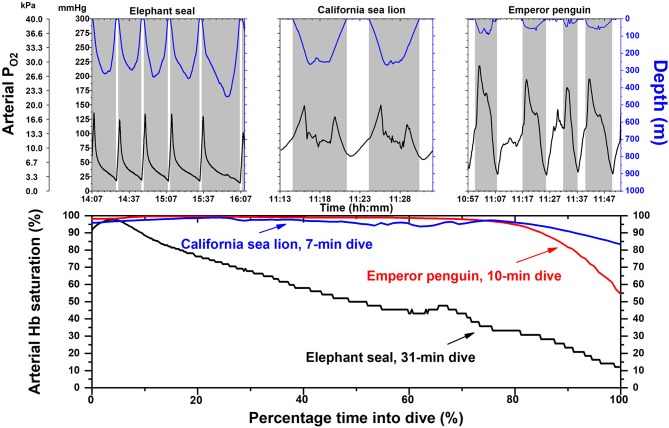Figure 1.
Arterial partial pressure of oxygen (PO2) and hemoglobin (Hb) saturation profiles in elephant seals, California sea lions and emperor penguins. Depth and PO2 profiles are depicted for each species in the upper panel. The shape of the arterial PO2 profiles of individual dives are dependent on the magnitude and distribution of O2 stores in each animal, depth of dive, and on multiple factors within a dive, including heart rate, lung O2 extraction, peripheral O2 delivery (i.e., the intensity of the dive response), lung or air sac volume and compression with depth, and the depth at which pulmonary gas exchange ceases in mammals (alveolar collapse, i.e., 100% pulmonary shunt). Shaded areas indicate dives; time scale is different for each species. In the lower panel, Hb saturation profiles for a single dive in each species were constructed with their respective O2-Hb dissociation curves and an arterial PO2 profile. In elephant seals, arterial Hb saturation is below 80% for most of the dive. In contrast arterial Hb saturations in sea lions and emperor penguins remain above 90% for most of the dive. Time scale is percentage of time of total dive duration. Adapted from prior publications (Meir and Ponganis, 2009; Meir et al., 2009; McDonald and Ponganis, 2012, 2013).

